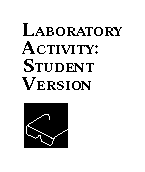

 Chemical properties of free alkali metals do not
lend themselves to hands-on activities for high school
laboratories due to the hazardous nature of these elements. With
great care, you can carry out lecture demonstrations with
selected alkali metals. Several demonstrations are detailed in
the next section. Activities involving alkali metal compounds do
exist and are available in many laboratory manuals. Some
chemistry of these metals is also covered in the demonstration
section of this module.
Chemical properties of free alkali metals do not
lend themselves to hands-on activities for high school
laboratories due to the hazardous nature of these elements. With
great care, you can carry out lecture demonstrations with
selected alkali metals. Several demonstrations are detailed in
the next section. Activities involving alkali metal compounds do
exist and are available in many laboratory manuals. Some
chemistry of these metals is also covered in the demonstration
section of this module.
Alternatively, audio-visual aids such as the CHEM Study film, Chemical Families; the Project Seraphim Periodic Table Videodisc; available video lecture demonstration tapes published as companions to new college general chemistry texts; or the "Doing Chemistry" videodisc program can serve as excellent substitutes for the hazardous live activities
Demonstration CAUTION: Use appropriate safety guidelines in performing demonstrations.
An alternative procedure that works well is the use of carbonate or oxide compounds of calcium, copper, lithium, sodium, and potassium in empty film canisters. Shake the closed canister, then open the cap near the base of the burner. The dust from the canister will enter the fuel flow and turn the flame a brilliant color.
Part 2
1. Fill a test-tube completely with water. Place a 6-10 cm coil of magnesium ribbon into the test-tube mouth. Stopper the test-tube, invert it into the tall narrow beaker, which has been half-filled with water, and remove the stopper. Heat the water. Have students observe and record results. or
2. Place a 6-10 cm coil of clean magnesium ribbon in a beaker half-filled with water. Invert a short stem glass funnel over the magnesium and place a test-tube over the funnel stem. Have students observe and record results. Next, heat the water to near boiling and have students record observations.Next, heat the water to near boiling and have students record observations.
Discussion
Once again, magnesium readily forms oxide coating on its surface. The pieces of magnesium used for the demonstration should be cleaned beforehand by dipping all pieces in 1-3 M HCl for a short time and then rinsing with tap water and drying.
The equation for the reaction is:
NOTE: This reaction happens very slowly, if at all, at room temperature, but bubbles of hydrogen are observed at elevated temperatures.
Compare and contrast the reactivity of the four metals with water. Have students explain the differences in terms of chemical periodicity.
[The revised ChemStudy film "Chemical Families", now available on videotape, beautifully demonstrates the reactivity of alkali metals with water and halogens. Many college texts now make available to teachers videotaped demonstrations that include reactions of alkali metals.]
Demonstration 3: Solvay Process Demonstration for the Commercial Preparation of NaHCO3 and Na2CO3
Materials
Safety
Directions
1. Prepare a warm water bath by heating ~600 mL water in an 800-mL beaker to 50-60 °C.